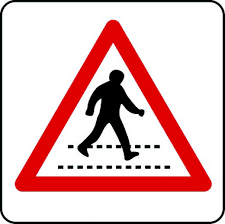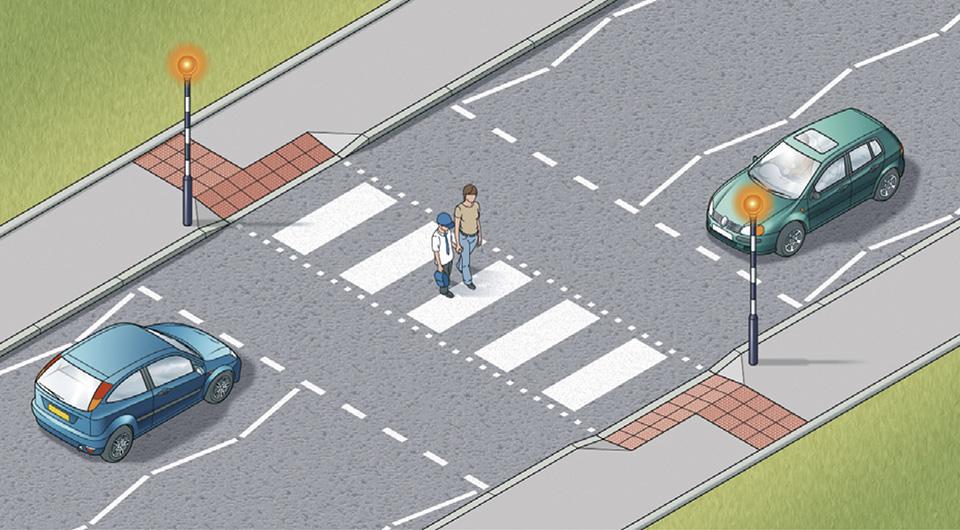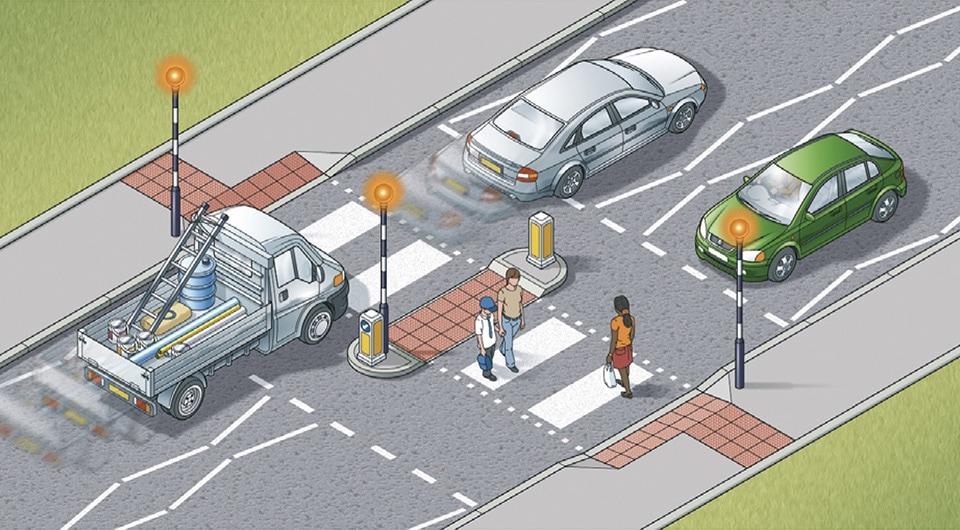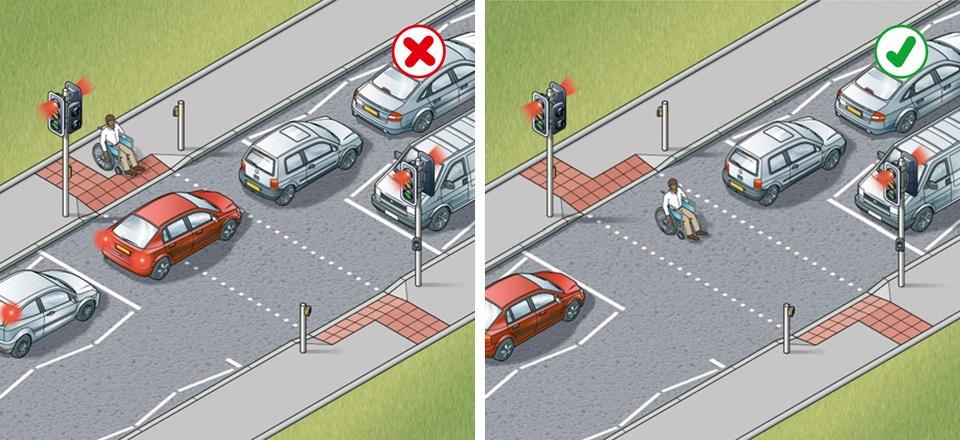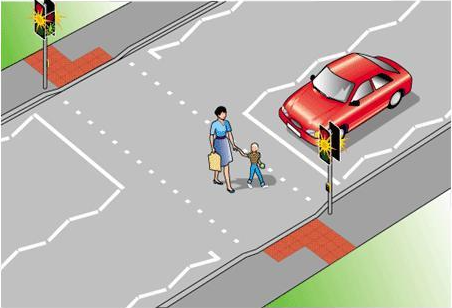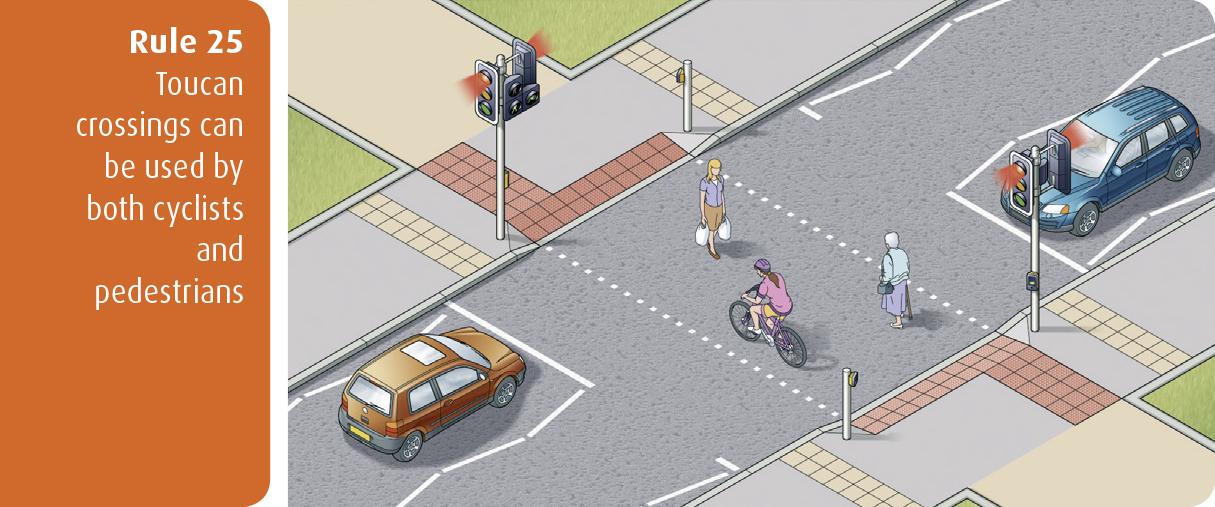Online driving tutorials
There are many types of pedestrian crossings out there and you'll have to know the difference between them. The theory test will definitely ask you questions about them. There are certain things as motorists we need to do when we come across them. This tutorial on pedestrian crossings will clarify what that is.
Zebra Crossings
Maybe you'll see a triangular warning pedestrian crossing sign on approach. This is rare, unless the crossing is new or hidden. In either case, the first thing you must do when you see the flashing orange lights is check your interior mirror. We're checking to see the position of the vehicle behind us. So, if you do need to reduce your speed, you know what level of braking to apply.
Next you must scan and plan. Look either side of the crossing for pedestrians and come up with a plan. If no one is there, you won't have to reduce your speed. Be sure not to increase your speed.
If you see people near the crossing, perhaps on a busy high street, come off the gas a little. Just in case someone wants to cross just as we arrive.
Some times you just have to stop
If someone is blatantly wanting to cross, then progressively reduce your speed and come to a stop just in front of the stop line. If the pedestrian is old, slow or there are lots of them then be prepared to use the handbrake. This is a precautionary measure for cars shunting you from behind onto the crossing. Also it'll prevent you from rolling back. NEVER wave people across; you could be beckoning them into danger.
If the pedestrian is crossing from right to left, then you would have to wait for them to get on the pavement before proceeding. If they are walking from left to right, then you only have to wait for them to clear your lane. I'd wait until they are about 2/3 of the way across, just to be safe.
Traffic Light Crossings
Hybrid crossing
Like at crossroads. These are on a timer and sequenced.
Pelican crossing
The ones with the flashing amber lights.
Puffin crossing
These have infra-red sensors on the top to detect pedestrians. When the last person is safely on the pavement, the lights will change.
Toucan crossing
These have been specially designed for pedestrians and cyclists to cross together.
Which ever type you see, the same rules apply. Mirror check on approach, scan and plan, be prepared to reduce your speed. Remember that red, red and amber, and solid amber all mean STOP! Green means go - and only if it's clear.
Pelican crossings are the exception where the flashing amber means go if clear too. You usually find these in busy areas with heavy traffic as it allows the cars too flow a little easier.
Puffin crossings are easily spotted from a distance with the cameras on top of them. When you scan and plan, if you spot a person about to press the button, the lights will change within seconds, so forward planning is essential here. Once they have cleared the crossing, the cameras senses this and within four seconds the lights will change again, be prepared to make progress.
With the toucan crossing, just be aware that cyclists can appear suddenly, so perhaps look a little further up and down the pavement for them.
If there is an island in the middle of a traffic light controlled crossing, it's still one crossing. Unless it is staggered, then it is two crossings.
Other crossings also exist and you must apply the same rules - Pegasus crossing and lollipop 'person' crossing.
A good subject to cover next and practise at this stage is the emergency stop. Read how to do it correctly here.


